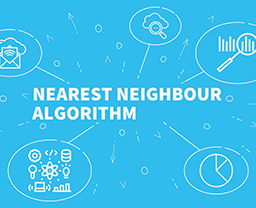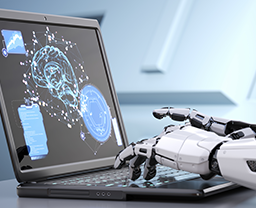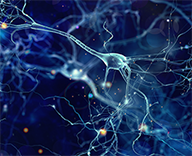
Machine Learning

Nearest Neighbour

Decision Trees

Linear Regression

Support Vector Machines

Neural Networks
What Is Machine Learning?
Think of Machine Learning as a branch on the proverbial artificial intelligence tree. This focuses on the use of data and algorithms by your operating system to learn and improve its accuracy, much like a human can. Through using statistics, algorithms can be trained to classify, predict, and uncover crucial insights, which can drive your business forward.
The malleability of machine learning can be applied to your business processes to streamline and automate your workflows make it a desirable asset to have in your corner. The only challenge you have is creating the technology to implement it.
Want a more visual explanation? Check out the video below!
The History Of Machine Learning
The first initial ideas of machine learning started with Walter Pitts and Warren McCulloch in 1943 with their first mathematical model of neural networks presented in their famous paper “A Logical Calculus of The Ideas Immanent in Nervous Activity.”
Donald Hebb laid more foundations with his book The Organization of Behavior. Arthur Samuel added the first program to play championship-level computer checkers, Marvin Minsky and Dean Edmonds built the first artificial neural network, and The Dartmouth Work Workshop is credited as the birthplace of artificial intelligence. All of this was done before even crossing into the 1960s. Nevertheless, these foundations were essential to the birth of machine learning.
Since then, Thomas Cover and Peter E. Hart drafted a paper that set the tone for the nearest neighbour algorithm, used for classification and regression in machine learning. Kunihiko Fukushima took it another step further and published work on neocognitron, which is a hierarchical multilayered network that can detect patterns and inspired unique neural network systems that are currently directly used for analyzing images.
There have been many movers and shakers even after this, as machine learning gained grasps in topic modelling, boosting machine learning’s power, adding multiple decision trees to allow the system to make better decisions, deepfake software, the IBM chess computer Deep Blue, ImageNet to improve computer vision, Google Brain, generative adversarial networks, DeepFace, Google’s Sibyl and Eugene Goostman (the world’s first chatbot).
The list is still growing, and history is still being written with cars that have the ability to self-drive or perform tasks, facial recognition, and many more. It is exciting to think about the possibilities and applicability of machine learning.
Types of Machine Learning
Nearest Neighbour
This is based on the principle of locating a number of training samples that are neighbours to the new point and predicting and labelling these based on the new point. This works by finding the distances between your query and all the examples in the data, selecting the number of examples closest and voting for the most frequent label.
Decision Trees
Decision trees are defined as supervised machine learning, so the programmer explains what the input is and the corresponding output from training data, so the data is split courtesy of your preset parameters. With each parameter that is answered using your decision tree, you get closer to final outcome that your decision tree was designed for.
Linear Regression
This supervised machine learning algorithm is hallmarked for the predicted output being continuous with a constant slope. As such, it is used to predict values that have a continuous range, such as sales and price. This can be created as a simple regression model, or for more complex issues, a multivariable regression model.
Support Vector Machines
This model of machine learning is linear and used for classifying and regression problems that you present to it. The premise behind this is simple. The algorithm creates a line or a hyperplane, which separates even the most complex of data into classes.
Neural Networks
Neural networks are meant to be a reflection of the human brain, which gives the computer the flexibility to recognize patterns and solve problems. Their components are node layers that have input laters, hidden layers, and, of course, an output layer. Each of these nodes passes on information to one another to allow the computer or system to process.
How Can Machine Learning Help My Business?
Machine learning can give you insights that sometimes your experienced workers cannot offer you. This includes driving the cost down when it comes to predictions, allowing flexibility to your operational models, automating routine tasks, finding areas for improvement, streamlining your data management, improving your data personalization, and more.
How Can LT3 ATG Apply Machine Learning To My Business?
Machine learning’s applications to your business are endless. It’s just about finding where machine learning can make the most significant impact. All of our applications employ a certain level of machine learning and at LT3 ATG, we will evaluate your business needs, operational models, and help develop a strategy for implementing machine learning for your business. Book your consultation today to get started with your transition!
Machine Learning
Related Articles
No related articles at the moment
Related Projects
Check out our other projects →LT3 ATG
Ready to get started?
Building your vision starts with a conversation. We're always happy to chat.














